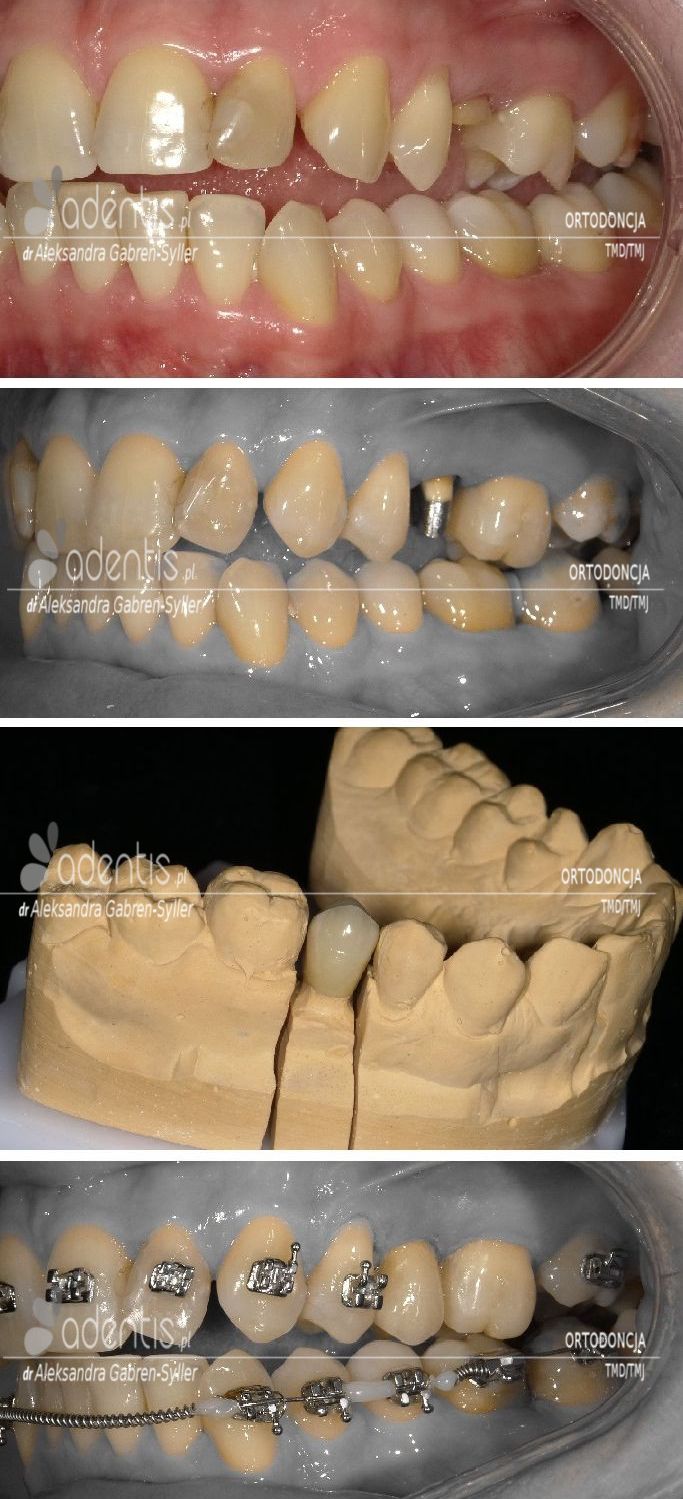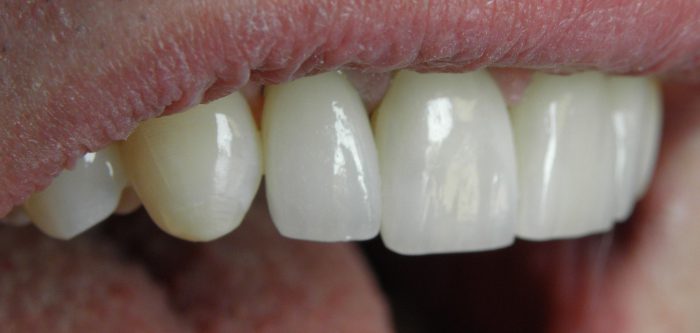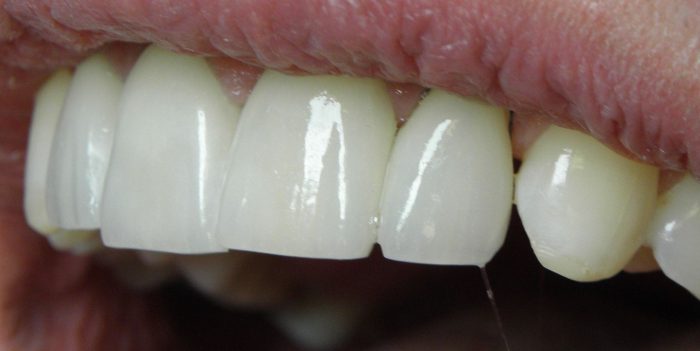Prosthetics
Dentysta stomatolog Warszawa Ursynów ADENTIS / Services / Prosthetics
Prosthetics deals with the reconstruction of missing teeth or dental tissue.
Losing one tooth causes the loss of function of three teeth around the gap. After 20-30 years, changes of this type become irreversible – prosthetic treatment becomes impossible. Therefore, we encourage you to treat missing teeth early. Prosthetics is also the art of beautification. It can change not only your smile but also your life.
Nothing is better than nature. We cannot deceive it or replace it.
The treatment cannot be worse than the disease.

Adhesive prosthetics is based on:
- tissue sparing (mini-max),
- leaving healthy tooth tissues and rebuilding lost tissues,
- on restorations without a metal framework.
Traditional prosthetics are:
- destruction of healthy tissues,
- loss of hard tissues,
- more common biological complications.
The forces acting in the oral cavity are so great that if the entire stomatognathic system (teeth, muscles, bone) is out of balance, it leads to destruction. This can only be remedied by rebuilding the entire system, not a single tooth. Only interdisciplinary treatment can protect teeth. Therefore, prosthetic treatment should be carried out carefully and carefully, rebuilding not one tooth but the entire disturbed system.
Porcelain veneers



Adhesive prosthetics:
- porcelain veneers
- three-quarter crowns
- endocrowns
- onlay
- adhesion bridges
- glass fiber bridges
Complex prosthetic work.
Due to the extended lifespan of our population, our teeth also need to last longer. You should keep this in mind before hastily grinding your teeth for crowns or bridges. Nowadays, prosthetic treatment should interfere as little as possible with the hard tissue of the patient’s teeth. Prosthetics should be based, whenever possible, on the principles of modern adhesion, which minimizes the possibility of complications and guarantees that the patient’s own teeth, as the pillars of prosthetic works, will be more durable. You should avoid grinding your teeth or making crown-root inlays.
Prosthetic rehabilitation
– reconstruction with composite material – veneers made using the direct method, 3/4 composite crown.
Adhesive prosthetics without tooth grinding.
Adhesive works are porcelain prosthetic restorations without a metal framework. The metal cannot create adhesion to the teeth, so these are cemented works. Zirconium is also a metal, it cannot adhere.
Lack of red aesthetics. Incorrect prosthetic restoration. Prosthetics is an art, pay attention to symmetry.
Aesthetics and symmetry.
The incisal edges of the central incisors and canines are located at one level. The edge of the lateral incisors is 0.5 mm shorter.
Correct positioning of teeth, when smiling you can see teeth up to number six.

In addition to improving facial aesthetics by restoring a full, beautiful smile that always improves your well-being and adds self-confidence, the reconstruction of lost teeth restores:
- Proper chewing function (which affects the condition of the entire digestive system)
- Correct pronunciation (missing teeth may cause lisp, unclear pronunciation)
- Proper function of the temporomandibular joint (missing teeth can lead to serious joint diseases, which manifests itself, among others, in severe headaches).
Long-term tooth loss leads to major changes in the oral cavity. The teeth adjacent to the gap become tilted and lose bone. There is significant vertical and horizontal bone loss, which prevents immediate implantation. The implantation procedure can be performed only after augmentation, i.e. after bone reconstruction. Sometimes it is a long and expensive procedure. Therefore, missing teeth should be replaced as early as possible. The long-term absence of opposing teeth leads to bone remodeling and tooth migration towards the gap. The teeth tilt towards the missing tooth, may unscrew around their axis or slide out of the bone. Each of the above-mentioned things makes prosthetic reconstruction very difficult and sometimes impossible.
In a full dental arch, each tooth has its place. It properly contacts the tooth on the left and right side, as well as the opposing tooth. In this position, it remains stable and does not move. The absence of even one tooth leads to imbalance. This leads to negative changes resulting from failure to replace the missing teeth (teeth adjacent to the gap tilt towards it, the opposing tooth moves towards the gap, which weakens the teeth’s hold in the bone, leading to loosening and tooth loss).
Dr. Alexandra Gabren
